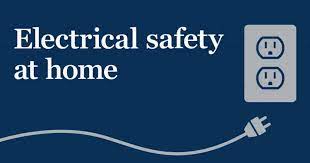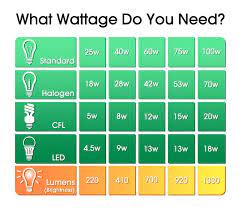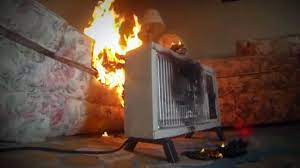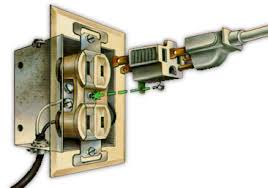
Keeping Your Home Safe Part 1
KEEPING YOUR HOME SAFE
PART 1
Every year electrical equipment and products are responsible for injuries, deaths, and fires in homes. The U.S. Consumer Product Safety Commission recommends that you do a room by room check to identify safety concerns every six months. They suggest that each time you move into a home or change your clocks is a perfect time to check your smoke alarms and perform a room-by-room safety check.
Check Lights
Check each light in the room including lamps and ceiling fixtures and make sure that each bulb is the appropriate wattage for the fixture it is installed in. This is less of a problem with the common use of LED bulbs. But you should still check for proper installation of the bulb and any indication of over-heating. A bulb that is higher wattage than recommended may overheat the light fixture, wiring or nearby materials leading to a fire.
Replace the bulb with the correct wattage bulb. If you are unsure use 60 watts or less and for unmarked ceiling fixtures with miniature bulbs use 25 watt bulbs.

Check Portable Electric Heating Equipment
Does the heater have a seal of a nationally recognized testing laboratory such as UL, ETL or CSA?
If not replace the heater – there is less assurance that safety features are adequate for a heater not tested by a nationally recognized lab.

Is the heater placed at least 3 feet from combustibles such as drapes and papers?
Move heater at least 3 feet away from combustible materials and check that nothing can fall or lean into the heater.
Is the heater stable – can it tip over?
Place heater on a stable surface and keep it out of traffic.
Check 3-Prong Adaptors
Are properly grounded 3-prong adaptors being used to attach power cords with 3 prong plugs to older 2 prong outlets?
Always connect the ground wire or metal tab to the center screw in the outlet cover. This is a safety feature designed to lessen the risk of shock in case of a fault. NEVER defeat the adaptor’s grounding feature or break the ground pin from a 3 prong plug.

Check Electrical Cords (Lamps, extension cords, TVs Computers etc.)
Is any cord frayed, cracked, or otherwise damaged?
Replace all damaged cords or replace the equipment. Damaged chords may have exposed live wires that can cause shock or fire.
Is any chord placed where it can be stepped on or is there furniture or a rug resting on the electrical cord?
If so, move all chords so they are out of the path of foot traffic. This is both a tripping hazard and potentially can cause damage to cords. Also move cords from under furniture and rugs as heavy weights can damage cords crushing their insulation and creating a shock and fire hazard.
Is any cord tightly wrapped around an object? If so, unwrap the cord as wrapped cords can trap heat which can lead to melting or weakening of insulation.
Are cords attached to anything with nails or wire staples? Remove any nails or staples to avoid cut wires or shock hazard.
Check the electrical rating of any appliance or equipment and make sure that the cord is carrying the proper load. 16AWG cords handle 1375 watts so use 14 AWG or 12AWG cords where loads are heavier.
No extension cord should be used on a permanent basis. If so, have new outlets installed or move appliance closer to outlet.
Make sure all equipment and cords are away from any source of water including rain, leaks and spills.
